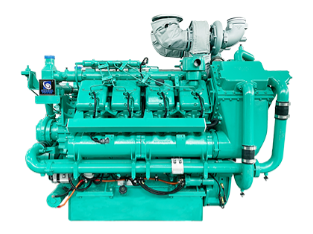- HOME
- ABOUT GOOGOL
- PRODUCTS
DIESEL ENGINE
GENERATOR SETS
- DOWNLOAD
- CASES
- NEWS
- CONTACT US
DIESEL ENGINE
GENERATOR SETS

The power, torque, and speed of an engine are three interrelated important performance indicators.
Firstly, power refers to the amount of work done by the engine per unit time, which reflects the speed at which the engine performs its work. The formula for calculating power is: power (P)=torque (T) × speed (n)/9550 (where 9550 is a constant used for unit conversion).

Torque is the force that causes an object to rotate, and for an engine, torque reflects the magnitude of the "force" output by the engine. Torque plays a crucial role in situations where significant force is required for starting or climbing a car. When the engine is running at low speeds, if the torque is high, the vehicle can easily overcome resistance and move forward. For example, some heavy-duty truck diesel engines can output greater torque at lower speeds, allowing them to tow heavy cargo.
The speed refers to the number of revolutions per minute that the engine crankshaft rotates. The speed of the engine affects its working condition. When the speed increases and the torque remains constant, according to the power calculation formula, the power will increase accordingly. This is like a person turning a handle, the faster the speed of rotation (high speed), and with the same force (torque), the more work (power) is done per unit of time.
In practical applications, different types of engines have different power, torque, and speed characteristics. For example, racing engines are usually designed as high-speed engines, which can output greater power at high speeds, allowing the race car to achieve high speeds. But this type of engine may have relatively low torque at low speeds. And some vehicle engines used for off-road or towing focus more on outputting larger torque at low speeds to meet the power needs of the vehicle in complex road conditions.
When a car is in motion, the gearbox also affects the relationship between engine power, torque, and speed. The gearbox can change the engine's output speed and torque, allowing the vehicle to obtain appropriate power under different driving conditions (such as starting, accelerating, cruising, etc.). For example, when the vehicle starts, the gearbox will amplify the engine torque through lower gears, allowing the vehicle to start smoothly. As the vehicle speed increases, the gearbox will gradually shift higher gears, allowing the engine to operate within the appropriate speed and torque range to ensure the vehicle's economy and power performance.